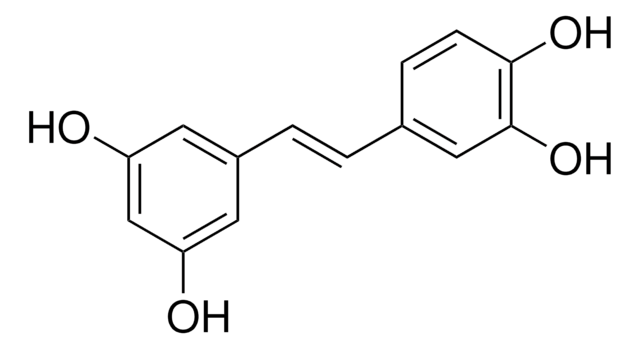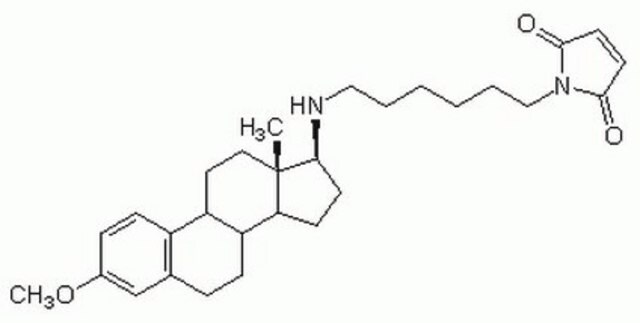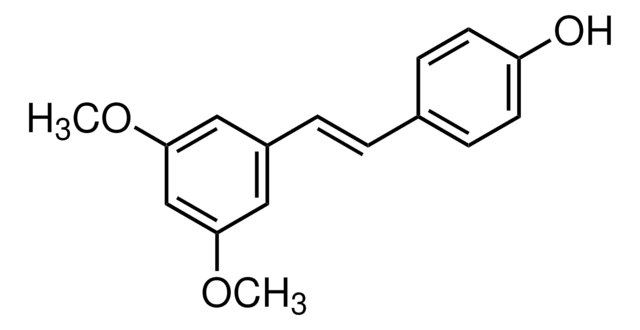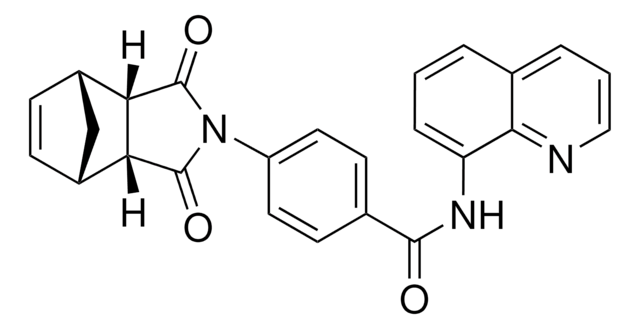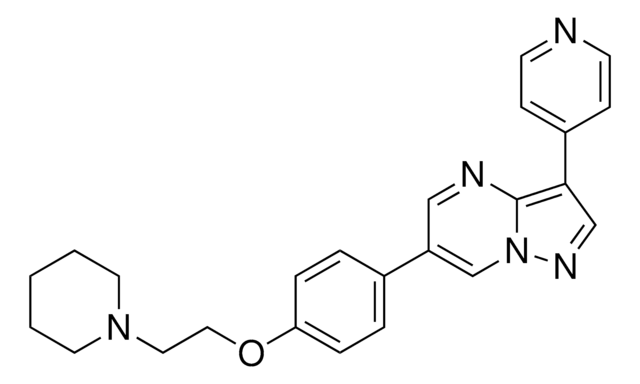527948
Piceatannol
A cell-permeable, substrate competitive and reversible plant metabolite that inhibits the activity of rat liver protein kinase A catalytic subunit (IC₅₀ = 3 µM), PKC (IC₅₀ = 8 µM), MLCK (IC₅₀ = 12 µM).
Synonym(s):
Piceatannol, trans-3,3ʹ,4,5ʹ-Tetrahydroxystilbene
About This Item
Recommended Products
Quality Level
assay
≥95% (HPLC)
form
crystalline solid
manufacturer/tradename
Calbiochem®
storage condition
OK to freeze
protect from light
color
off-white
solubility
DMSO: 10 mg/mL
ethanol: 10 mg/mL
shipped in
ambient
storage temp.
2-8°C
InChI
1S/C14H12O4/c15-11-5-10(6-12(16)8-11)2-1-9-3-4-13(17)14(18)7-9/h1-8,15-18H/b2-1+
InChI key
CDRPUGZCRXZLFL-OWOJBTEDSA-N
General description
Biochem/physiol Actions
Activity of rat liver protein kinase A catalytic subunit
Packaging
Warning
Reconstitution
Other Notes
Wang, B.H., et al. 1998. Planta Med. 64, 195.
Keely, P.J., and Parise, L.V. 1996. J. Biol. Chem. 271, 26668.
Oliver, J.M., et al. 1994. J. Biol. Chem. 269, 29697.
Thakkar, K., et al. 1993. J. Med. Chem. 36, 2950.
Geahlen, R.L., et al. 1989. Biochem. Biophys. Res. Commun. 165, 241.
Legal Information
signalword
Warning
hcodes
Hazard Classifications
Acute Tox. 4 Dermal - Acute Tox. 4 Inhalation - Acute Tox. 4 Oral
Storage Class
11 - Combustible Solids
wgk_germany
WGK 3
flash_point_f
Not applicable
flash_point_c
Not applicable
Certificates of Analysis (COA)
Search for Certificates of Analysis (COA) by entering the products Lot/Batch Number. Lot and Batch Numbers can be found on a product’s label following the words ‘Lot’ or ‘Batch’.
Already Own This Product?
Find documentation for the products that you have recently purchased in the Document Library.
Our team of scientists has experience in all areas of research including Life Science, Material Science, Chemical Synthesis, Chromatography, Analytical and many others.
Contact Technical Service